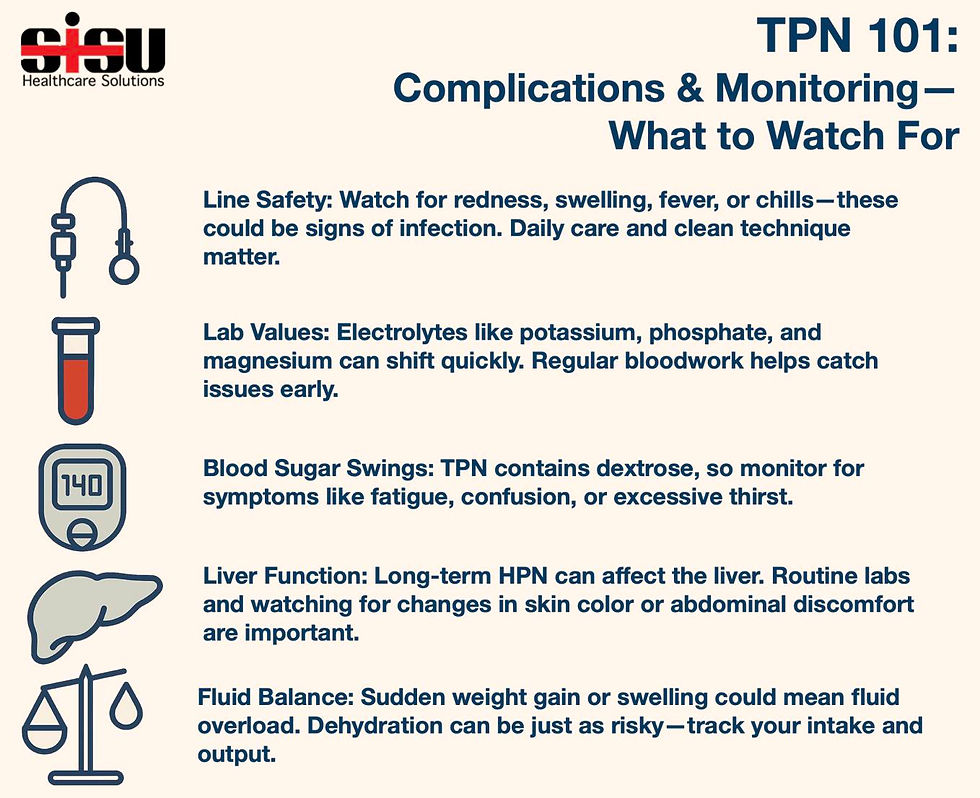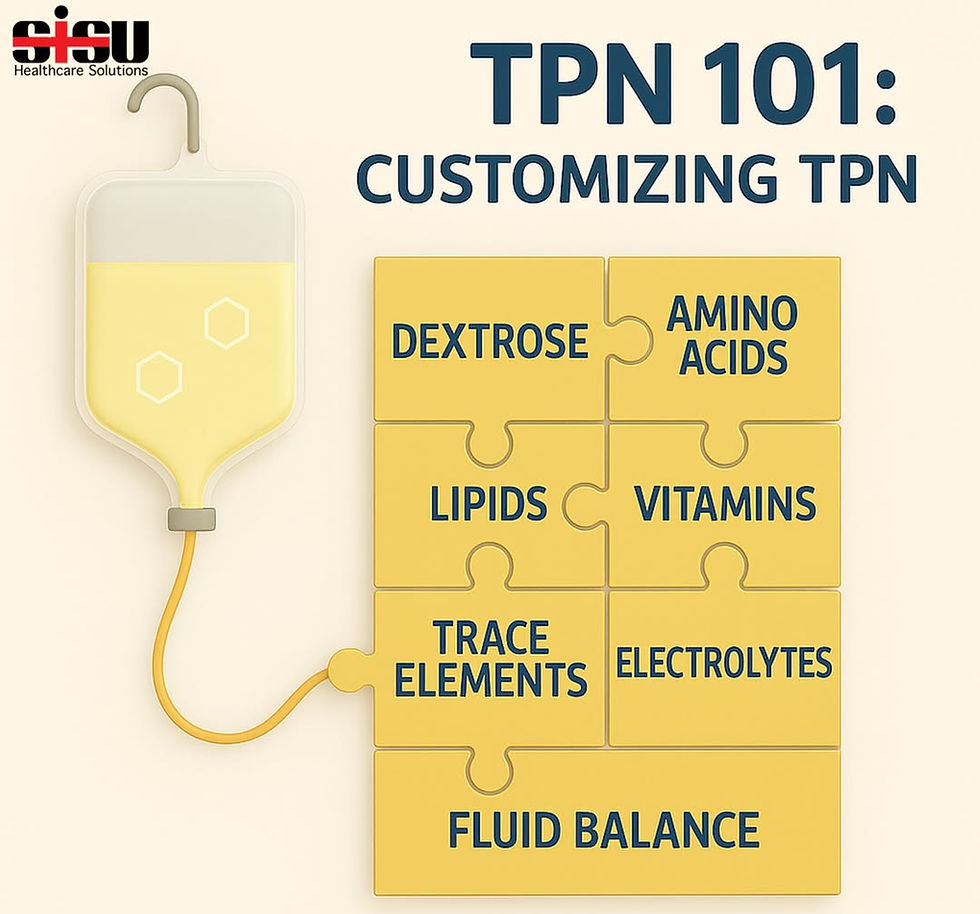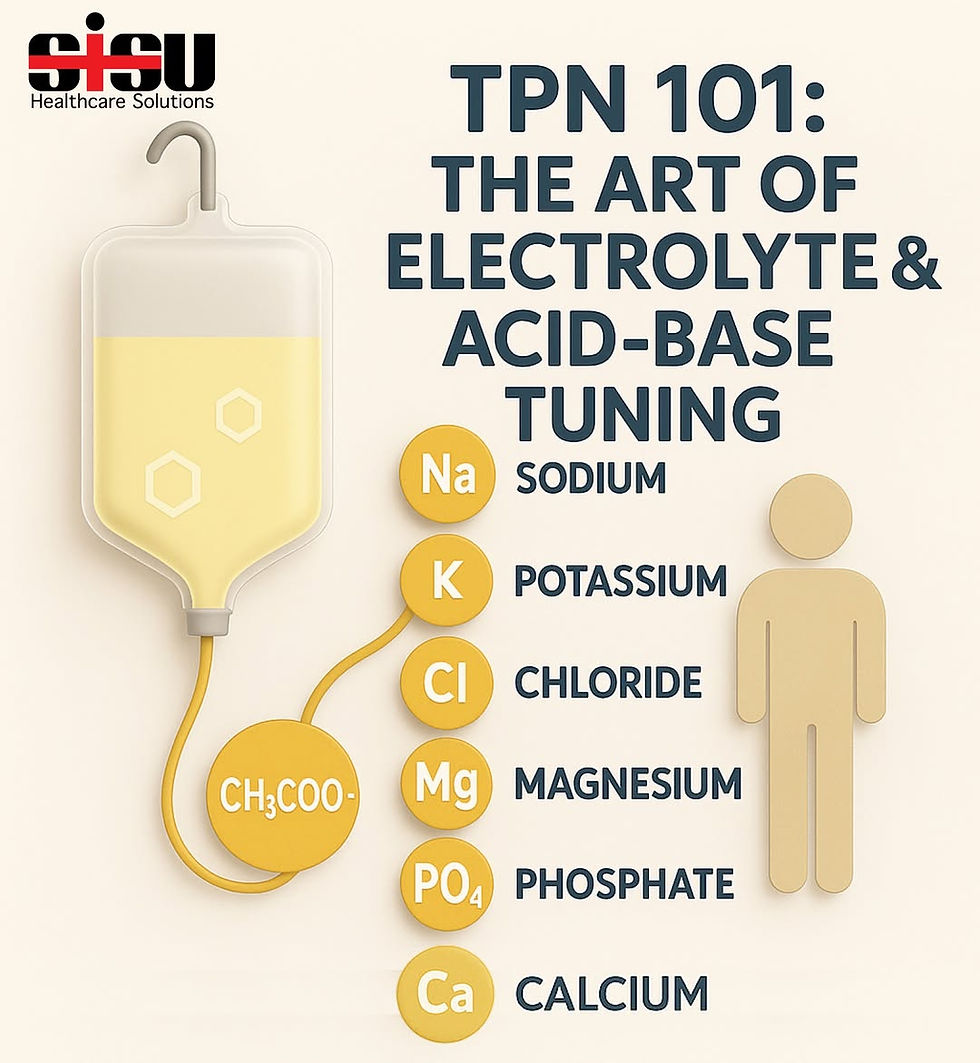What You Need To Know About Sepsis
- CKHendry
- Jul 28, 2023
- 4 min read
What is Sepsis?
Sepsis is caused by the body's overwhelming response to an infection, which can be bacterial, viral, fungal, or parasitic. When an infection occurs, the immune system usually responds to fight off the invading pathogens. However, in some cases, the immune response can become dysregulated and trigger widespread inflammation throughout the body, leading to sepsis.
The infection can originate from various sources, including:
1. Pneumonia: Infections of the lungs, often caused by bacteria or viruses.
2. Urinary tract infections (UTIs): Infections in the bladder, kidneys, or urethra.
3. Abdominal infections: Such as appendicitis or peritonitis.
4. Skin infections: Including cellulitis or abscesses.
5. Infections of the bloodstream (bacteremia): Bacteria in the bloodstream can spread and cause sepsis.
6. Infections related to medical procedures or devices: Surgical wounds, intravenous catheters, or urinary catheters can become entry points for infections.
7. Gastrointestinal infections: Infections of the digestive system, such as from bacterial or parasitic pathogens.
It's important to note that not everyone with an infection will develop sepsis. Certain factors can increase the risk of sepsis, including:
1. Weakened immune system: People with conditions that compromise the immune system, such as HIV/AIDS, cancer, or autoimmune diseases, are more susceptible to sepsis.
2. Age: Both very young infants and elderly individuals are at higher risk of developing sepsis.
3. Chronic medical conditions: Conditions like diabetes, kidney disease, and liver disease can increase the risk of sepsis.
4. Recent surgery or hospitalization: Invasive medical procedures and hospital stays can introduce potential sources of infection.
5. Presence of invasive medical devices: Catheters, ventilators, and other devices can increase the risk of infection and subsequent sepsis.
6. Immunocompromising treatments: Certain medical treatments, such as chemotherapy or long-term steroid use, can weaken the immune system and raise the risk of sepsis.
What are the signs and symptoms of sepsis?
Sepsis is a potentially life-threatening condition that occurs when the body's response to infection triggers an inflammatory response throughout the entire body. It can lead to organ failure and, if left untreated, may result in septic shock, which is a severe drop in blood pressure that can be fatal. Recognizing the signs and symptoms of sepsis is crucial for early detection and prompt treatment. Some of the common signs and symptoms of sepsis include:
1. Fever: High body temperature, often above 101°F (38.3°C), although it can also present with a low body temperature in some cases.
2. Rapid heart rate: Also known as tachycardia, the heart rate may be significantly elevated, usually above 90 beats per minute.
3. Rapid breathing: Breathing may be fast and shallow, often exceeding 20 breaths per minute.
4. Confusion or altered mental state: Sepsis can affect the brain, leading to confusion, disorientation, or difficulty concentrating.
5. Low blood pressure: Hypotension, or low blood pressure, may be present, especially in septic shock.
6. Pale or mottled skin: The skin may appear pale or have a patchy, purplish discoloration.
7. Decreased urine output: The kidneys may be affected, leading to reduced urine production.
8. Extreme fatigue: Profound exhaustion and weakness may occur.
9. Difficulty breathing: Shortness of breath or rapid breathing may be experienced.
10. Elevated blood glucose levels: Sepsis can lead to high blood sugar levels in some individuals.
Sepsis Prevention
Preventing infections through good hygiene practices and promptly treating infections can reduce the risk of sepsis. Additionally, individuals with weakened immune systems, the elderly, and those with chronic medical conditions should be especially vigilant in monitoring for signs of infection and sepsis.
1. **Practice Good Hygiene**: Regularly wash your hands with soap and water for at least 20 seconds, especially after using the restroom, before eating, and after coughing or sneezing. If soap and water are not available, use an alcohol-based hand sanitizer. Encourage others around you to do the same.
2. **Keep Wounds Clean**: If you have a cut, scrape, or wound, clean it with soap and water, apply an antiseptic, and cover it with a clean dressing. Watch for signs of infection, such as increased redness, swelling, warmth, or drainage, and seek medical attention if any of these occur.
3. **Vaccinations**: Stay up-to-date with recommended vaccinations, such as the flu vaccine, pneumonia vaccine, and any other vaccines recommended by your healthcare provider. Vaccinations can help prevent certain infections and their complications.
4. **Prevent UTIs**: For those prone to urinary tract infections (UTIs), staying hydrated, urinating regularly, and practicing good hygiene can reduce the risk of UTIs.
5. **Manage Chronic Conditions**: If you have chronic medical conditions, work closely with your healthcare provider to manage them effectively. Properly controlled conditions like diabetes, lung disease, or kidney disease can reduce the risk of infections.
6. **Avoid Invasive Medical Procedures When Possible**: While sometimes necessary, invasive medical procedures can increase the risk of infections. Discuss the need and potential risks with your healthcare provider before undergoing any invasive procedure.
7. **Care for Medical Devices Properly**: If you have a catheter, ventilator, or any other medical device, follow the healthcare provider's instructions on how to care for and maintain it properly. This reduces the risk of infection.
8. **Stay Informed**: Be aware of the signs and symptoms of infections, including common infections in your community. Early detection and prompt treatment of infections can prevent them from developing into sepsis.
9. **Promote a Clean Environment**: If you are in a caregiving role or work in a healthcare setting, ensure that surfaces and equipment are regularly cleaned and disinfected to prevent the spread of infections.
10. **Maintain a Healthy Lifestyle**: Eat a balanced diet, exercise regularly, get enough sleep, and manage stress. A healthy lifestyle can strengthen your immune system and make you less susceptible to infections.
Remember that sepsis can develop rapidly and can be life-threatening. If you or someone you know experiences signs or symptoms of sepsis, such as high fever, rapid heart rate, difficulty breathing, confusion, or other concerning symptoms, seek immediate medical attention. Early detection and prompt treatment of sepsis can significantly improve the chances of a positive outcome.




Comments